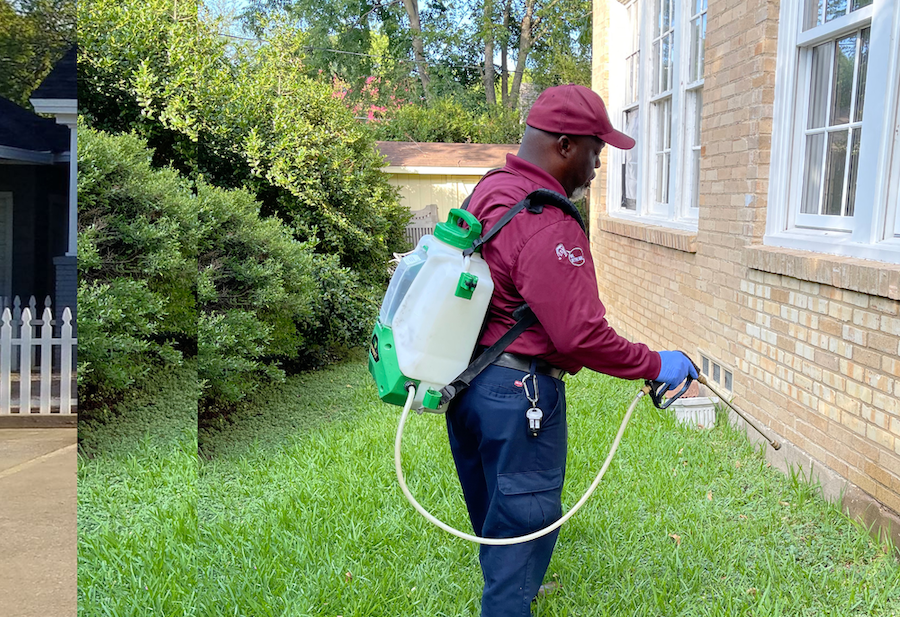High Quality A1 Pest Control Services Charlotte - Protect Your Home
High Quality A1 Pest Control Services Charlotte - Protect Your Home
Blog Article
Bed Bug Therapy Breakdown: Comparing Chemical Vs. Non-Chemical Solutions
In the realm of insect control, particularly when taking care of the persistent concern of bed pests, the option in between chemical and non-chemical therapy solutions can be a pivotal one. Both methods provide distinctive advantages and disadvantages, influencing elements such as performance, security considerations, and overall price. By analyzing the nuanced details of each method, a more clear understanding of which path to seek in dealing with a bed bug infestation can be obtained.
Performance of Chemical Treatments
Chemical treatments for bed insect problems have been widely recognized for their powerful and quick efficacy in removing these pests. When considering the efficiency of chemical therapies, it is vital to comprehend that they can offer a quick and complete option to a bed pest problem. Specialist pest control men frequently depend on pesticides to target bed pests at numerous stages of their life cycle, including eggs, adults, and fairies. These chemicals generally function by disrupting the bed pests' nerves, causing paralysis and eventual fatality.
Additionally, chemical treatments have the benefit of offering residual impacts, suggesting that they can remain to get rid of bed insects also after the preliminary application. This residual action is specifically helpful in combating any type of possible re-infestations. Furthermore, the quick activity of chemical treatments can bring relief to individuals encountering serious bed pest infestations, allowing them to reclaim control of their space promptly.
Safety Interest In Chemical Solutions
One important element that needs careful consideration when making use of chemical solutions for bed pest therapy is guaranteeing the safety of residents and the setting. Direct exposure to particular chemicals used in bed insect therapies can lead to respiratory system problems, skin inflammation, or various other negative reactions, specifically in individuals with pre-existing conditions or sensitivities.
Moreover, the ecological effect of chemical solutions is another considerable consideration. Some chemicals used in bed bug therapies might be hazardous to useful pests, wild animals, and communities if they leach right into the soil or water supply. It is vital to make use of chemical treatments judiciously, following security guidelines, and taking into consideration less hazardous alternatives to alleviate these dangers and make sure the risk-free and reliable administration of bed insect problems.
Advantages of Non-Chemical Techniques
Taking into consideration the possible security concerns and ecological influence linked with chemical services for bed bug treatment, discovering non-chemical strategies provides an encouraging alternative with a number of unique advantages. Non-chemical therapies are ecologically friendly, as they do not add to air or water contamination, making them a lasting choice for bug control.
In addition, non-chemical services can be efficient in targeting bed insects, including hard-to-reach areas where chemical therapies might not penetrate - A1 exterminator charlotte nc. Techniques such as heat treatment, vacuuming, vapor cleansing, and mattress coverings offer complete obliteration without the use of damaging chemicals.
Limitations of Non-Chemical Treatments

Additionally, non-chemical therapies usually call for several applications to achieve successful obliteration. This can be taxing and may not always guarantee total elimination of all bed insects and their eggs, specifically in hard-to-reach or hidden locations.
Additionally, the success of non-chemical therapies heavily counts on proper application and thoroughness, which can be challenging for individuals without expert proficiency. Inadequate application of non-chemical methods may cause insufficient removal, resulting in consistent invasions and the need for added therapies.
Therefore, while non-chemical treatments have their benefits, it is vital to acknowledge these constraints and consider them when determining the most effective technique for handling bed pest invasions.
Cost Contrast: Chemical Vs. Non-Chemical Options
Offered the constraints associated with non-chemical therapies, an important aspect to evaluate in the context of bed pest administration is the expense contrast in between chemical and non-chemical choices. In contrast, non-chemical therapies like warm treatment or steam can be extra costly, with prices ranging from $1,000 to $6,000 for an entire home. While the initial expense of chemical therapies might appear lower, multiple treatments may be called for to fully get rid of the invasion, possibly increasing the total price.
Verdict

Taking resource into consideration the potential safety and security problems and ecological impact linked with chemical options for bed bug treatment, discovering non-chemical methods provides an encouraging option with several distinct benefits.Provided the restrictions linked with non-chemical treatments, an essential aspect to review in the context of bed bug monitoring is the price comparison in between chemical and non-chemical choices. In contrast, non-chemical treatments like heat therapy or vapor can be a lot more costly, with prices varying from $1,000 to $6,000 for an entire home. While the initial price of chemical treatments may seem lower, several treatments might be required to completely get rid of the problem, possibly increasing the total expense.In final thought, when comparing chemical and non-chemical bed pest therapy choices, it is important to think about efficiency, security, advantages, constraints, and price.
Report this page